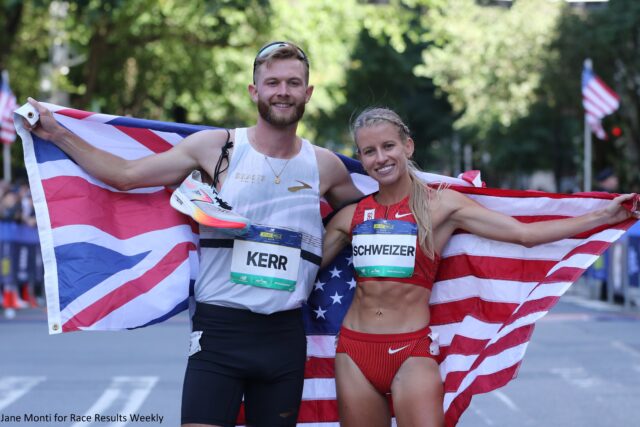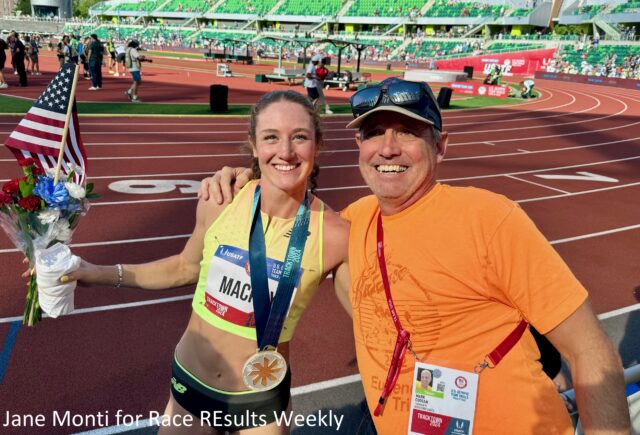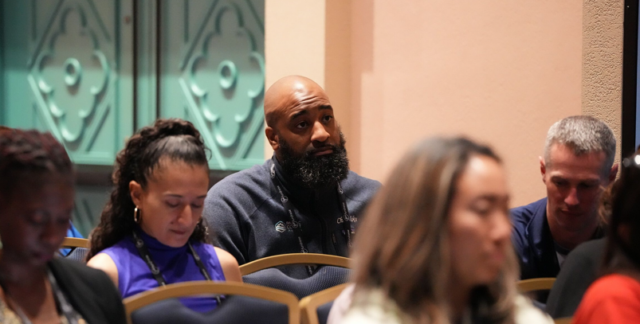Key Takeaways from Running USA's Race Participation Growth Webinar
Following the release of a new Running USA industry insights report that shows significant growth for many running events in the first half of 2024, the organization held a webinar with four race production professionals to learn first-hand what they have experienced at their events.
The report (free to download for all active Running USA members) shows significant growth in race participation across various race distances. The growth ranges from 12.5% to 26%, with marathon finishers up by 26%. Individual races and race weekends (comprising multiple race distances) saw substantial increases, particularly 5Ks (19%), 10Ks (20%), half marathons (15.5%), and marathons (26%). These numbers are derived from finisher data through Athlinks, excluding no-shows.
Moderated by Running USA Executive Director Jay Holder, the participating panelists were:
● Dan Lakin, Sr. Event Operations Manager and Race Director, Ventures Endurance (Louisville Triple Crown of Running)
● Becky Radliff, Director of Marketing and Events, Eugene Marathon
● Ashlee Snider, Director of Marketing, Metropolitan Richmond Sports Backers (Ukrop’s Monument Avenue 10K)
● Mike Wattigny, Marketing & Creative Director, FRESHJUNKIE Racing (Louisiana Marathon)
Read on for more insights from the virtual session and watch the recording in its entirety here.
Meet the featured events
The Eugene Marathon experienced a 31% growth in participation across its half marathon and marathon distances (2023-2024). Becky Radliff attributes this to strong community engagement and successful virtual races during COVID.
The Louisville Triple Crown of Running reported a 28% total growth, with their 5K and 10K races seeing 31% increases and the 15K achieving a 25% increase.
The Louisiana Marathon saw a 28% growth in finishers. Mike Wattigny noted that industry-wide inertia, combined with the closure of other races, contributed to their leadership position in the region.
The Ukrop's Monument Avenue 10K in Richmond had 23% growth, with finishers increasing from 15,200 in 2023 to 18,732 in 2024. Ashlee Snider explained their focus on community and celebration to maintain engagement post-pandemic.
Post-pandemic return to racing and runner re-engagement
All of the speakers discussed the challenges and strategies of restoring participation after the pandemic. Becky Radliff (Eugene Marathon) mentioned their focus on a virtual race experience in 2021, which helped retain runners. Ashlee Sneder (Ukrop’s 10K) emphasized the importance of community and celebration to re-engage participants after a three-year hiatus.
Mike Wattigny highlighted several strategies FRESHJUNKIE has employed to connect with their audience post-pandemic. One key tactic was the launch of an ambassador program, which gained traction in response to decreasing returns from digital marketing efforts. By putting out a call to their runner database, they received over 100 applicants, resulting in a selection of "micro-influencers" who actively participated in local running clubs and events. The success of this program encouraged them to expand the ambassador team for the upcoming season, further enhancing community engagement.
Wattigny discussed compensating ambassadors with race entries, gear, and VIP access, tailoring incentives to encourage long-term commitment and participation. He acknowledged that while the ambassador program has yielded positive results, there is a learning curve in guiding influencers to maximize their social media impact. He plans to strengthen their communication and coaching efforts to drive even greater returns from their ambassadors in the future.
Dan Lakin talked about the importance of rebuilding trust within the running community after the challenges of the pandemic. His team took a hands-on approach, meeting with running clubs, reading past event surveys, and engaging with their community to better understand and cater to their needs. They also developed VIP programs and experiential enhancements, such as food and music, to elevate the participant experience and ensure future growth.
Curating a memorable event that generates a fear of missing out
Becky Radliff echoed similar sentiments on participant experience, stressing the importance of focusing on every interaction—from social media engagement to race day execution. Her team invested heavily in documenting race weekend through video and photography to boost organic reach, especially on Instagram Reels. She attributed much of the race's recent growth to these visuals and their consistent engagement on social media.
Wattigny agreed, saying that video, particularly vertical video on platforms like TikTok, plays a crucial role in showcasing the event's experience, helping to expand their reach beyond local participants.
Demographic trends reflected in participation increases
Snider (Ukrop’s Monument Avenue 10K): Demographics are skewing younger, with growth in the 18-29 age range (+4 percentage points from 2022 to 2024). Racial diversity is increasing as well, with rises in Black (+2%) and Hispanic participants, while White participants decreased (-3.5%).
Lakin (speaking about Chicago events): Similar trends, with growth in younger, more diverse groups due to partnerships with community groups like Black Girls Run and Latinas Run.
Wattigny: Marathon events seeing a slight increase in younger participants. The growth of female runners (60-65% in half marathons) and the importance of grassroots connections are emphasized.
Both Lakin and Snider noted that marketing efforts for shorter races like 5Ks and 10Ks tend to be more localized, targeting nearby runners and drive markets, while longer races, like half-marathons and marathons, tend to attract participants from farther afield. Snider mentioned that the Richmond 10K has benefited from outreach to local run clubs and attending expos in nearby cities, boosting awareness without heavy investment in paid advertising.
Marketing and budgeting strategies
Lakin: 8-10% of revenue goes toward marketing, with a $4-5 acquisition cost per participant for shorter distances.
Wattigny: Higher acquisition costs (~$10) for marathons, shifting back to grassroots tactics and reducing reliance on digital marketing due to changes in algorithms.
Forecasting growth was challenging. Radliff and Lakin discussed making real-time adjustments to procurement based on race growth, such as medals and participant caps.
Post-race and spectator experience
Snider: Ukrop’s Monument Avenue 10K is branded as Richmond's biggest block party, focusing on engaging spectators and volunteers to create a festive atmosphere.
Radliff: Post-race experiences for participants at Hayward Field are enhanced by opening the stadium for participants to relax, enjoy hot pancakes, beer, and watch the race.
Paid VIP post-race experiences were common across all events, offering exclusive access to food, drinks, and comfortable seating.
**
Looking for more insights? Watch the full recording and stay tuned for the release of the 2024 Global Runner Survey from Running USA.





